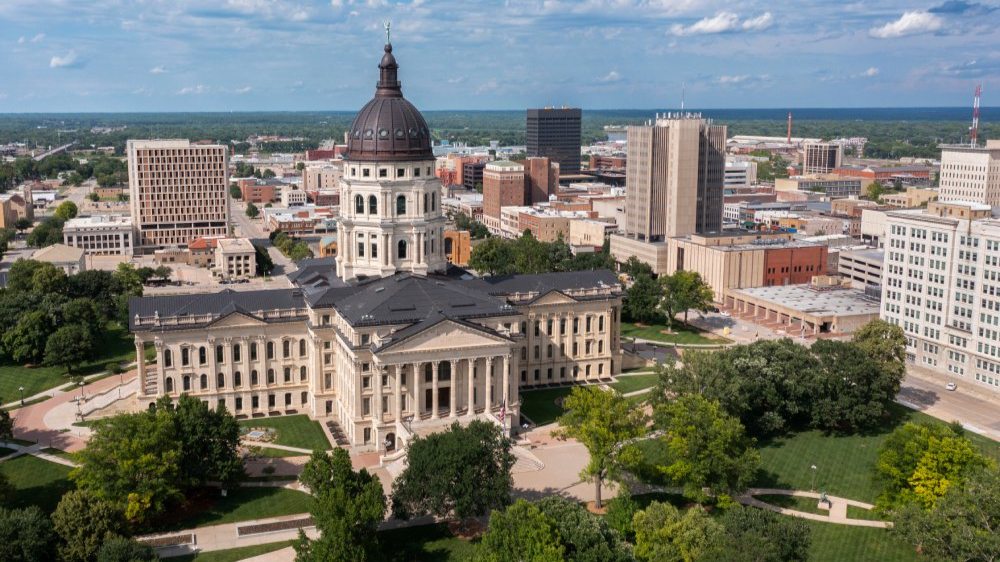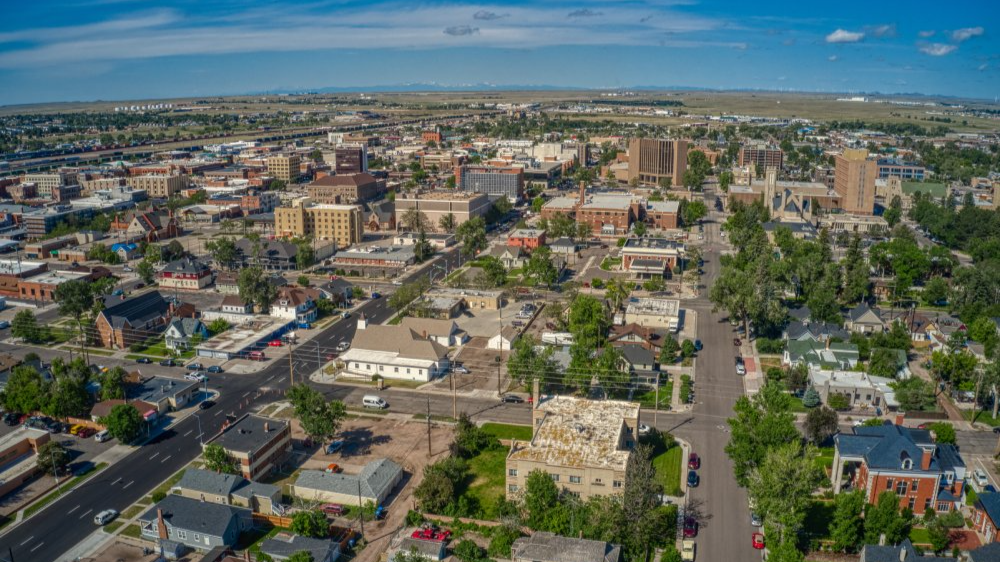Where You Live Matters: The States Struggling Most With Healthcare
As many of us already know—Healthcare quality varies significantly across the 50 United States.
The 2025 Commonwealth Fund Scorecard, highlighted by Newsweek, evaluated all the states based on 50 metrics, including: access, affordability, outcomes, and equity. Factors such as Medicaid expansion, public health funding, and preventive care initiatives also played a role in these rankings.
Let's delve into the 25 states that, according to this data, face the most challenges in providing quality healthcare to their residents.
25: Illinois
Uninsured Rate: Approximately 7% of adults aged 19–64 are uninsured.
Preventable Hospitalizations: Higher-than-average rates of preventable hospital admissions.
Access to Care: Significant disparities in access between urban and rural areas.
The state of Illinois is dealing with increased costs and poor rural health indicators.
 Lectrician2, CC BY-SA 4.0, Wikimedia Commons
Lectrician2, CC BY-SA 4.0, Wikimedia Commons
24: Montana
Healthcare Access: Sparse population creates challenges in access.
Mental Health: Limited services and high suicide rates.
Insurance Coverage: Notable uninsured population.
Montana's remote geography makes healthcare access a serious challenge.
23: North Carolina
Medicaid Expansion: The state has not expanded Medicaid under the Affordable Care Act (ACA).
Rural Health: Struggles with access to care in its rural communities.
Infant Mortality: High rates, especially among minority populations.
Without Medicaid expansion, North Carolina's rural communities are especially vulnerable.
 Precisionviews, CC BY-SA 4.0, Wikimedia Commons
Precisionviews, CC BY-SA 4.0, Wikimedia Commons
22: Ohio
Opioid Crisis: A major issue impacting health outcomes.
Preventive Care: Low screening rates for common conditions.
Healthcare Costs: Higher-than-average expenses for residents.
Substance abuse and gaps in preventative healthcare are why Ohio finds itself on this list.
21: New Mexico
Healthcare Access: Shortages in rural and tribal areas.
Chronic Diseases: High prevalence of diabetes and heart disease.
Insurance Coverage: Significant uninsured population.
New Mexico's provider shortages and high rates of chronic conditions hurt its rankings.
 MARELBU, CC BY 3.0, Wikimedia Commons
MARELBU, CC BY 3.0, Wikimedia Commons
20: South Dakota
Medicaid Expansion: Recently approved, implementation in progress.
Mental Health Services: Limited availability, especially in rural areas.
Infant Mortality: Higher-than-average rates compared to national figures.
South Dakota has begun progress with Medicaid but still lags in key health outcomes.
 Robbschultz69, CC BY-SA 4.0, Wikimedia Commons
Robbschultz69, CC BY-SA 4.0, Wikimedia Commons
19: Kansas
Medicaid Expansion: Has not expanded Medicaid under the ACA.
Health Outcomes: High rates of obesity and smoking.
Access to Care: Rural areas face shortages of healthcare providers.
Kansas continues its struggles with a lack of Medicaid expansion and regional disparities.
18: Arizona
Medicaid Expansion: Expanded under the ACA, but challenges remain.
Mental Health Services: Limited availability in rural areas.
Preventive Care: Below-average screening rates.
Arizona faces ongoing challenges in mental health services and preventive care access.
17: Indiana
Medicaid Expansion: Implemented with contested work requirements.
Health Outcomes: High rates of obesity and smoking.
Access to Care: Rural shortages of healthcare providers.
Indiana's healthcare system faces affordability and access issues, especially in rural areas.
 Nicholas J. Klein, Adobe Stock
Nicholas J. Klein, Adobe Stock
16: South Carolina
Medicaid Expansion: Has not expanded Medicaid under the ACA.
Infant Mortality: High rates, particularly among African American communities.
Access to Care: Significant rural healthcare provider shortages.
South Carolina's lack of Medicaid expansion and rural healthcare challenges impact its health outcomes.
 Charleston, South Carolina, USA 🇺🇸 in 4k Ultra HD Drone Video, Dronography
Charleston, South Carolina, USA 🇺🇸 in 4k Ultra HD Drone Video, Dronography
15: Kentucky
Chronic Diseases: High prevalence of diabetes and heart disease.
Preventive Care: Low rates of cancer screenings.
Healthcare Access: Limited access in Appalachian regions.
Kentucky's chronic disease burden and limited preventive care contribute to its healthcare challenges.
 Grindstone Media Grp, Adobe Stock
Grindstone Media Grp, Adobe Stock
14: Alaska
Healthcare Access: Geographic barriers limit access to care.
Mental Health: High rates of suicide and substance abuse.
Insurance Coverage: Significant uninsured population in remote areas.
Alaska's unique geographic and mental health challenges impact its healthcare system performance.
 Quintin Soloviev, CC BY-SA 4.0, Wikimedia Commons
Quintin Soloviev, CC BY-SA 4.0, Wikimedia Commons
13: Florida
Uninsured Rate: Higher than national average.
Elderly Population: Large aging population with complex health needs.
Healthcare Costs: High out-of-pocket expenses for residents.
Florida's large uninsured and elderly populations contribute to its healthcare system's strain.
12: Wyoming
Healthcare Access: Sparse population leads to provider shortages.
Mental Health Services: Limited availability statewide.
Insurance Coverage: Higher uninsured rates in rural areas.
Wyoming's rural nature and limited healthcare infrastructure pose significant challenges.
11: Louisiana
Chronic Diseases: High rates of obesity and diabetes.
Infant Mortality: Among the highest in the nation.
Healthcare Access: Limited access in rural and low-income areas.
Louisiana's health disparities and limited access contribute to its poor healthcare rankings.
10: Alabama
Medicaid Expansion: Has not expanded Medicaid under the ACA.
Chronic Diseases: High prevalence of heart disease and obesity.
Healthcare Access: Significant rural provider shortages.
Alabama's lack of Medicaid expansion and chronic disease burden impact its healthcare system.
 Carol M. Highsmith, Wikimedia Commons
Carol M. Highsmith, Wikimedia Commons
9: Missouri
Mental Health Services: Limited availability, especially in rural areas.
Preventive Care: Low rates of cancer screenings.
Healthcare Costs: High out-of-pocket expenses for residents.
Missouri's mental health service gaps and preventive care shortcomings affect its healthcare performance.
8: Tennessee
Infant Mortality: Sadly higher than national average.
Chronic Diseases: High rates of diabetes and heart disease.
Healthcare Access: Limited access in rural communities.
Tennessee's infant mortality and chronic disease rates highlight its healthcare challenges.
7: Georgia
Medicaid Expansion: Has not expanded Medicaid under the ACA.
Maternal Mortality: Among the highest in the nation.
Healthcare Access: Significant disparities between urban and rural areas.
Georgia's maternal health crisis and lack of Medicaid expansion strain its healthcare system.
6: Nevada
Mental Health Services: Limited availability statewide.
Healthcare Costs: High out-of-pocket expenses for residents.
Preventive Care: Low rates of routine screenings.
Nevada's mental health service shortages and high costs impact its healthcare rankings.
 Rmvisuals, CC BY-SA 4.0, Wikimedia Commons
Rmvisuals, CC BY-SA 4.0, Wikimedia Commons
5: West Virginia
Chronic Diseases: High prevalence of obesity and diabetes.
Substance Abuse: Significant impact from the opioid crisis.
Healthcare Access: Limited access in rural areas.
West Virginia's chronic disease burden and substance abuse issues challenge its healthcare system.
4: Arkansas
Medicaid Expansion: Implemented but facing challenges.
Infant Mortality: Higher than national average.
Healthcare Access: Limited in rural communities.
Arkansas's healthcare system faces challenges despite Medicaid expansion efforts.
 Law7833, CC BY-SA 4.0, Wikimedia Commons
Law7833, CC BY-SA 4.0, Wikimedia Commons
3: Oklahoma
Uninsured Rate: Among the highest in the nation.
Mental Health Services: Limited availability statewide.
Healthcare Access: Significant rural provider shortages.
Oklahoma struggles with some of the highest uninsured rates and limited mental health infrastructure.
 Nils Huenerfuerst, CC BY-SA 4.0, Wikimedia Commons
Nils Huenerfuerst, CC BY-SA 4.0, Wikimedia Commons
2: Texas
Uninsured Rate: With over 16% of adults lacking coverage, Texas ranks highest in the nation.
Medicaid Expansion: Has not expanded under the Affordable Care Act.
Maternal Health: The Lone Star state is among the worst in the U.S., with high maternal mortality rates.
Texas consistently ranks near the bottom in healthcare due to lack of Medicaid expansion, limited coverage, and troubling maternal outcomes.
 75316serk, CC BY-SA 4.0, Wikimedia Commons
75316serk, CC BY-SA 4.0, Wikimedia Commons
1: Mississippi
Chronic Diseases: Leading the nation in obesity, diabetes, and heart disease rates.
Infant Mortality: Among the highest nationwide, especially in underserved communities.
Healthcare Infrastructure: Severely underfunded, especially in rural areas.
Mississippi ranks dead last in healthcare rankings, facing persistent health crises and inadequate system support.
You Might Also Like:
The Best Coffee Shop In Every State
The Things People In Each State Hate The Most
The Best And Worst States To Live In, According To Cost Of Living Data



















